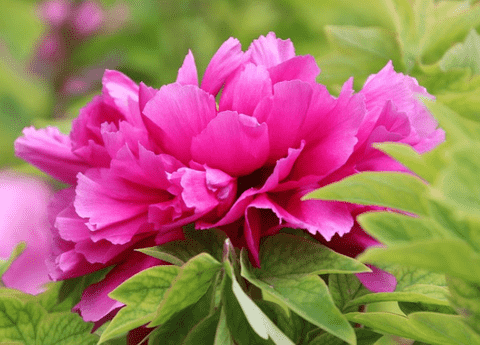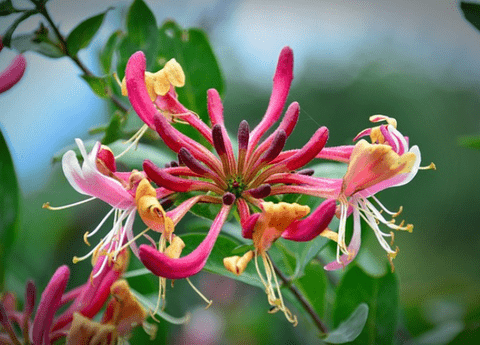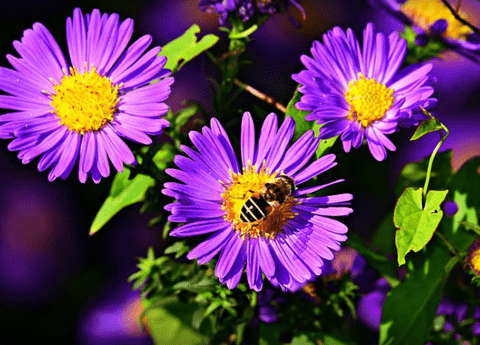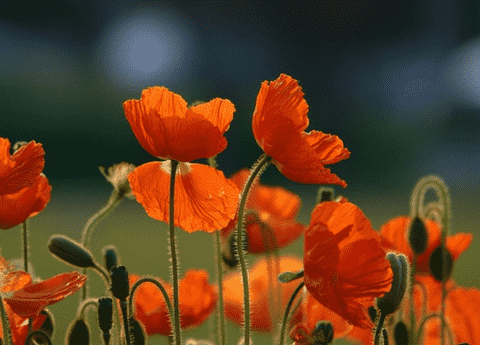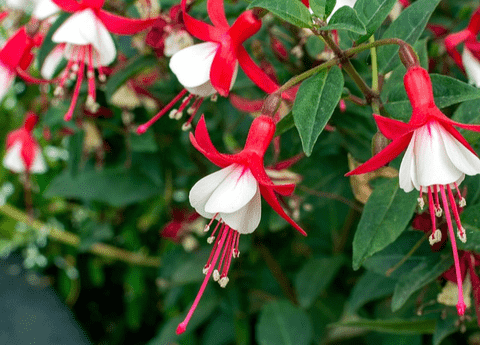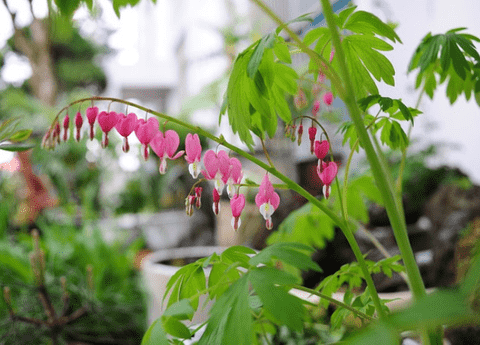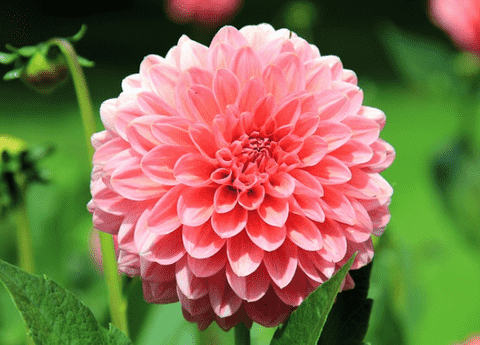Peonies: How to Cultivate and Maintain These Gorgeous Flowers
Peonies are cherished for their lush, vibrant blooms and their ability to add a touch of timeless elegance to any garden. Known for their hardiness and longevity, these perennials can thrive for decades with the right care. Cultivating and maintaining peonies, however, requires some specific knowledge and attention to detail. In this guide, we will delve into the essential steps for growing and caring for peonies, from selecting the right variety and planting site to ongoing maintenance and troubleshooting common issues. Join us as we explore how to bring these stunning flowers to their full potential in your garden.
Understanding Peony Varieties
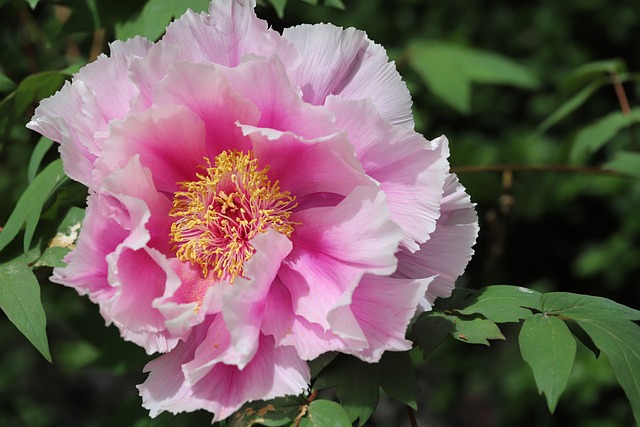
Choosing the Right Peony
Selecting the right peony variety is crucial for success in your garden. Peonies come in three main types: herbaceous, tree, and intersectional (Itoh). Herbaceous peonies retreat to the ground each winter and reemerge with new growth in the spring. They are renowned for their large, fragrant blooms. Tree peonies, on the other hand, have woody stems and do not die back in the winter, making them more shrub-like. Intersectional peonies are hybrids that combine the best traits of herbaceous and tree peonies, offering sturdy stems and abundant blooms. Consider your climate, soil type, and garden space when choosing a peony variety. Herbaceous peonies are often the easiest to grow, while tree peonies may require more specific conditions. Intersectional peonies can be a great option for those looking for low maintenance. Each type has its own unique beauty, so choose the one that best fits your garden’s needs.
Popular Peony Species
Several peony species are favored by gardeners for their unique characteristics and beauty. The ‘Sarah Bernhardt’ is a classic herbaceous peony known for its large, double pink flowers and delightful fragrance. It’s a popular choice for cut flowers. ‘Festiva Maxima’ is another beloved herbaceous variety, featuring white blooms with distinctive red flecks. For those interested in tree peonies, ‘Hana Kisoi’ offers stunning, blush-pink flowers that can grow up to eight inches across. Intersectional peonies like ‘Bartzella’ are also highly sought after; this variety produces vibrant yellow flowers with a citrus scent and can bloom for an extended period. Each of these species has its own charm and can add a different aesthetic to your garden. When selecting a species, consider your local climate and soil conditions to ensure the best growth and flowering results.
Color and Bloom Patterns
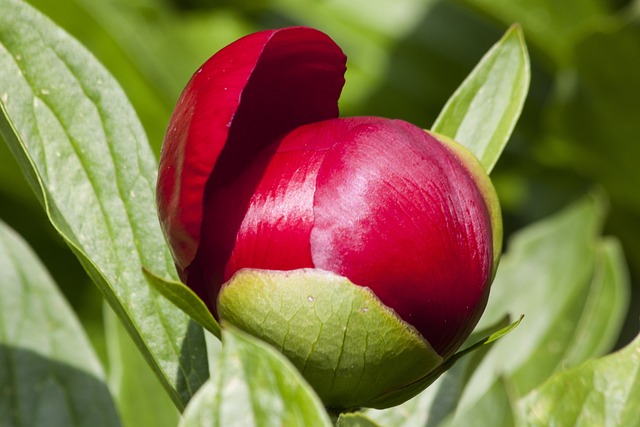
Peonies are celebrated for their wide range of colors and intricate bloom patterns. From soft pastels to vibrant hues, peonies can match any garden’s color scheme. Common colors include pink, white, red, and yellow, but more unusual shades like coral and deep maroon are also available. Bloom patterns vary as well, with some varieties offering single, semi-double, or fully double flowers. Single blooms have one or two layers of petals and a visible center, while double blooms are lush and full, often hiding the center. Semi-double varieties offer a balance between the two, with several layers of petals but still a visible center. The diversity in color and bloom patterns means you can choose peonies that complement other plants in your garden or create a striking focal point. Understanding these characteristics helps in selecting the perfect peonies to elevate your garden’s aesthetic appeal.
Planting Your Peonies
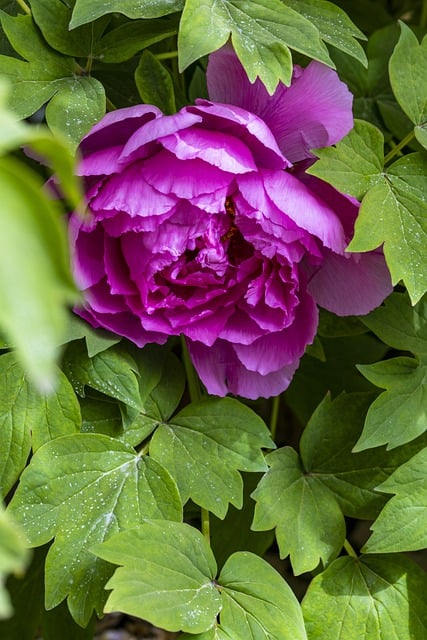
Ideal Soil Conditions
For peonies to thrive, the soil must meet specific conditions. Peonies prefer well-draining soil with a slightly acidic to neutral pH, typically between 6.5 and 7.0. Soil that is too compact can lead to waterlogging, which can rot the roots and hamper growth. To improve drainage, consider adding organic matter like compost or aged manure to the planting site. This improves soil structure and supplies essential nutrients. It’s also beneficial to conduct a soil test before planting to determine its pH and nutrient levels. If the pH is too low, you can add lime to raise it, while sulfur can lower a high pH. Proper soil preparation is crucial for the long-term health and flowering of your peonies, ensuring they have the best possible start in your garden.
Planting Depth and Spacing
Proper planting depth and spacing are crucial for the successful growth of peonies. When planting peony roots, make sure the eyes (the small reddish buds) are positioned no more than 1 to 2 inches below the soil surface. Planting them too deep can result in poor flowering. For tree peonies, the graft union should be about 4 to 6 inches below the soil surface to encourage strong growth.
Spacing is equally important to ensure good air circulation and to prevent fungal diseases. Space herbaceous and intersectional peonies are about 3 to 4 feet apart, while tree peonies can be spaced slightly closer at 2 to 3 feet apart. This spacing ensures that each plant has enough room to grow and spread without competing for nutrients. Proper depth and spacing not only promote healthy growth but also enhance the overall aesthetic of your garden, ensuring that each plant has ample room to showcase its beauty.
Watering and Fertilizing Tips
Consistent watering and proper fertilization are key to the robust growth of peonies. After planting, water the peonies thoroughly to help establish their roots. During the growing season, provide about 1 inch of water per week, either from rainfall or supplemental watering. It’s best to water early in the morning to allow foliage to dry out during the day, which helps prevent fungal diseases.
Fertilizing peonies should be done sparingly. In early spring, before new growth begins, apply a balanced, slow-release fertilizer, such as a 10-10-10 formula. Steer clear of over-fertilizing, as it may promote excessive foliage growth while reducing the number of blooms. A light application of compost or well-rotted manure can also provide necessary nutrients.
Applying mulch around the base of plants helps to retain moisture and regulate soil temperature. However, be sure to keep the mulch a few inches away from the stems to prevent rot. Additionally, proper watering and fertilizing practices are essential for keeping your peonies healthy and ensuring they produce abundant blooms.
Maintaining Healthy Peonies
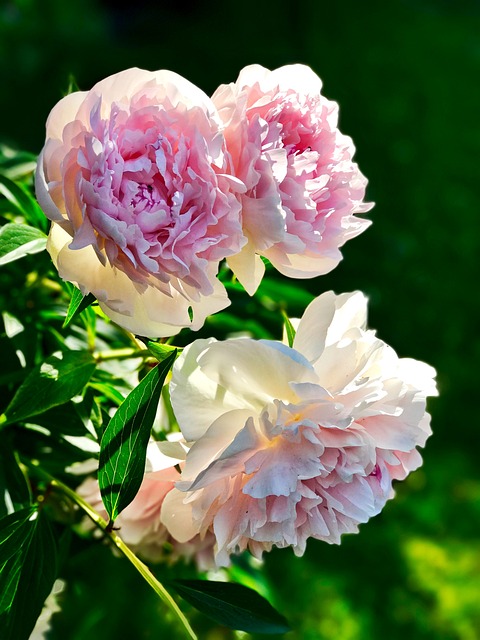
Pruning and Deadheading
Pruning and deadheading are essential tasks for maintaining healthy peonies and encouraging prolific blooming. Deadheading, or the removal of spent flowers, should be done regularly during the blooming season. This prevents the plant from expending energy on seed production, redirecting it instead toward root and bud development. To deadhead, simply cut the flower stem back to the first set of healthy leaves.
Pruning herbaceous peonies involves cutting back the foliage in the fall after the first frost. This helps prevent disease and prepares the plant for winter dormancy. Cut the stems down to about 1-2 inches above the soil level. For tree peonies, pruning is generally minimal. Remove any dead or diseased wood in early spring before new growth starts, and trim for shape if necessary.
Regular pruning and deadheading not only keep your peonies looking their best but also contribute to their overall vigor and longevity, ensuring they remain a stunning focal point in your garden for years to come.
Pest and Disease Control
Effective pest and disease control is vital for the health of your peonies. While peonies are relatively hardy, they can still fall victim to several common issues. Botrytis blight is a frequent problem, especially in wet conditions. It causes dark, mushy spots on the stems and buds. To prevent this, ensure good air circulation by properly spacing your plants and avoiding overhead watering. If botrytis does appear, remove and destroy affected plant parts immediately.
Peonies can also be susceptible to powdery mildew, which manifests as a white powdery coating on leaves. Regularly inspecting and promptly removing infected foliage can mitigate its spread. For both diseases, applying a fungicide early in the growing season can be effective.
Pests like aphids and thrips can also attack peonies. You can manage these with insecticidal soap or neem oil. Regularly checking your plants and maintaining cleanliness in your garden will help keep these pests and diseases at bay, ensuring your peonies remain healthy and vibrant.
Seasonal Care and Protection
Caring for peonies involves attention to their needs throughout the seasons. In spring, as new growth emerges, fertilize lightly and ensure they receive adequate water. Mulching around the base helps retain moisture and suppress weeds but keeps the mulch away from the stems to prevent rot.
During the summer, continue regular watering, especially during dry spells. Deadhead spent blooms to encourage further growth and prevent energy wastage on seed production. Stay vigilant for pests and diseases, and tackle any problems as soon as they arise.
In the fall, after the first frost, prune herbaceous peonies back to 1-2 inches above the soil level. For tree peonies, trim away any dead or damaged branches. This prepares the plants for winter dormancy and reduces disease risks.
Winter protection is minimal but essential. Apply a light layer of mulch to insulate the roots of herbaceous peonies. Tree peonies generally do not require extra protection unless in extremely harsh climates. Seasonal care ensures your peonies thrive year-round and continue to grace your garden with their beauty.

